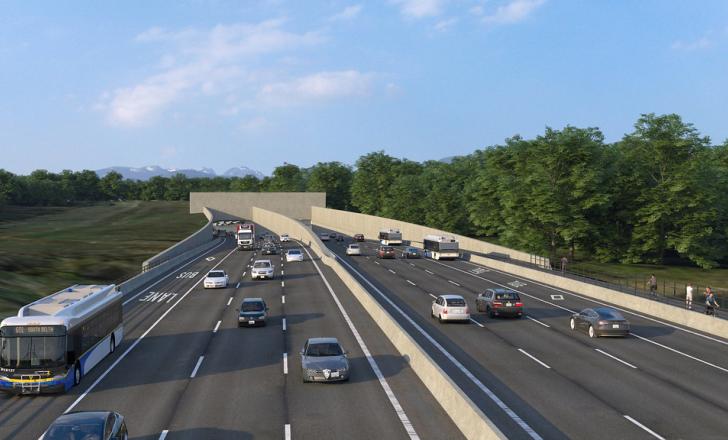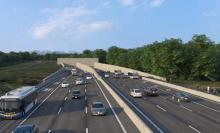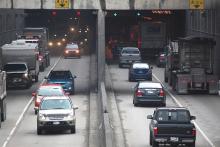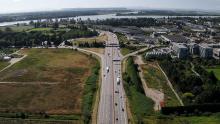
An eight-lane immersed-tube tunnel will replace the aging George Massey Tunnel near Vancouver on Canada’s west coast.
The announcement by the British Columbia provincial government reverses an earlier decision to build a 10-lane suspension bridge.
The new tunnel will carry BC Highway 99, providing “a toll-free crossing that aligns with regional interests and improves transit, cycling and walking connections across the Fraser River”, according to the government announcement made by Rob Fleming, provincial minister of transportation and infrastructure. “We’ve worked hard to make sure this is the right project for the region and along with the other Highway 99 improvements getting underway, we’re getting people moving around in the region,” he said.
The new eight-lane tunnel will be in operation in 2030, with the cost estimated at US$3.3 billion (CAN$4.15 billion). Two of the eight lanes will be dedicated for bus rapid transit and there will be separated pathways for cyclists and pedestrians.
The existing 61-year-old George Massey Tunnel is Canada’s only tunnel below sea level and carries more than its design limit of 80,000 vehicles a day. Extensive renovations to the tunnel and attempts to improve access roads have been done over the years, but the structure has only about 10 years of useful life, according to some reports.
An earlier replacement proposal – a 3km-long 10-lane cable-stay bridge costing US$2.8 billion - was underway in 2015 with the BC government saying that construction was on target to start in 2017 for completion in 2022. Procurement had started and three consortia were being considered.
One consortium was headed by Spanish company ACS and its local subsidiaries and included Star America Infrastructure Partners and Aecon. Another of the competing consortia comprises was Kiewit, Macquarie and Vinci. The third was made up of Fluor, John Laing and SNC-Lavalin.
However, a provincial election in 2017 saw a change of government which promptly scrapped the project in favour of more research and consultation with the mayors of the greater Vancouver area cities and municipalities. In October 2019 the mayors recommended an eight-lane tunnel as the replacement.
When the initial bridge project was cancelled, local media reported that the province would pay $1.65 million to two of the three shortlisted consortia which had already submitted bids.
For the just-announced replacement tunnel, two options were presented in the business case that the government received last December – an eight-lane tunnel and eight-lane suspension bridge. Both options were given serious consideration, noted the government.
The tunnel was chosen as the best option for several reasons. A tunnel limits noise because it is below water and with a tunnel there is no visual impact to the surrounding communities, as there would be with a bridge. Also, a tunnel has little impact on nearby agricultural land and does not introduce new navigational restrictions to the Fraser River under which it will be built.
The next step in what is now officially called the George Massey Tunnel Crossing Project is to initiate an environmental assessment process, including ongoing engagement with indigenous peoples, the preparation for procurement.
Transportation Investment Corporation will head delivery of the project on behalf of the BC Ministry of Transportation and Infrastructure and will provide the controls, practices and other oversight essentials for the project.







